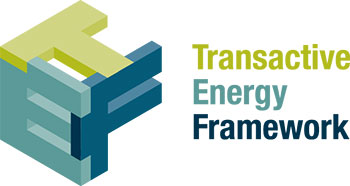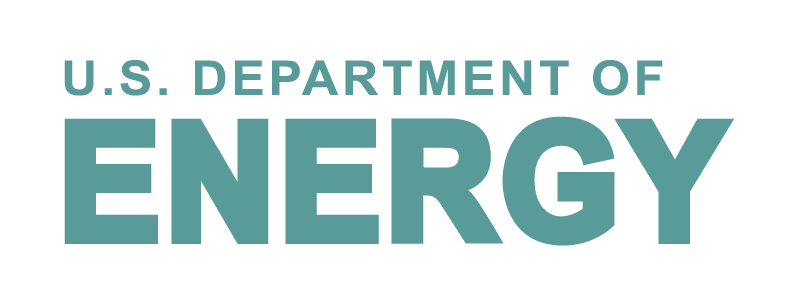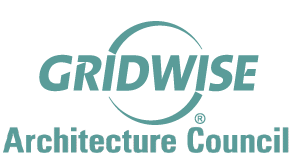GridWise® Architecture Council 4th Transactive Energy Workshop

December 10 – 11, 2013
Rose Center
Westminster, CA
The GridWise® Architecture Council (GWAC) will host its fourth workshop on Transactive Energy at the Rose Center in Westminster, CA, on December 10–11, 2013. This workshop will apply the “Transactive Energy Framework” document through the presentation and discussion of transactive energy case studies. The Transactive Energy Framework includes definition of attributes of transactive energy systems. Researchers and practitioners who have implemented transactive energy systems or capabilities that may be used in implementing such systems have been asked to describe their results using a case study template based on the attributes defined in the framework document.
The format of the meeting will be 45-minute presentations of twelve case studies during the first day and a half. The afternoon of the second day will be devoted to discussion of the collective set of case studies. Through this discussion the Council expects to gather information that can be used to further refine the framework document, to promote collaboration, and to identify gaps in the technologies and capabilities associated with transactive energy.
The Council is inviting speakers who are known to be working on transactive energy or related technologies. There are a small number of presentation opportunities for others who may be engaged in related work and are willing to present it in the Transactive Energy Framework case study format.
More generally, the number of participants in the workshop will be limited to about fifty people, including Council members and speakers. If you are interested in attending please contact the GWAC administrator.
The complete proceedings are available for download including the individual presentations.
For further information contact:
Dr. Ron Melton
Administrator, GridWise Architecture Council
Pacific Northwest National Laboratory
P.O. Box 999, MSIN K1-85
Richland, WA 99352
ron.melton@pnnl.gov
509-372-6777
What is Transactive Energy?
The term “transactive energy” has been extensively discussed in the previous GWAC workshops on the subject. The Council has refined those discussions in an updated definition in the Transactive Energy Framework:
“A set of economic and control mechanisms that allows the dynamic balance of supply and demand across the entire electrical infrastructure using value as a key operational parameter.”
This definition was developed based on extensive discussion of both the nature of the evolving electric power system and the concepts that have been discussed at workshops on transactive energy held by the Council starting in May 2011. The definition by itself does not provide a complete picture of the entire domain of transactive energy. To provide a more complete view and to help facilitate discussion of different specific approaches to implementing transactive energy we have also defined the following attributes in the framework document:
The following attributes represent qualities or characteristics that describe significant dimensions of transactive energy. These have been included to assist the reader in understanding the boundaries of transactive energy systems and should be seen as supplements to the definition provided above. These attributes are intended to serve two purposes. First, they provide a broader view of transactive energy by applying the definition in the context of possible implementations of transactive energy. Second, in considering different implementations they provide a common way to describe the implementation. In this way they are intended to help promote discussion and comparison of different approaches.
Architecture
All transactive energy tools and methodologies are described as constituents or subsystems of a system architecture. A key distinction is whether the architecture is centralized, distributed, or a combination of the two. Note that the entire electrical infrastructure is an Ultra Large Scale System of systems as defined in the in the Software Engineering Institute’s ULS Book, 2006 (#REF).
Extent
An implementation of transactive energy technology will typically apply within some geographic, organizational, political, or other measure of extent. A geographic extent, for example, might be within a region and apply across multiple participating entities. An extent may be described organizationally, for example, if an implementation is intended for use within a single utility, building, or campus. Likewise, a transactive technique may apply across political boundaries with different regulatory or policy constraints. Extent may also be considered relative to the topology of an electrical infrastructure including end users. Thus, a transactive technique may apply in transmission, distribution, or both; it may also be useful for managing energy within buildings or by end-users of electrical energy.
Transacting parties
Fundamentally, transactive energy involves transacting parties. In most cases these will be automated systems, possibly acting as surrogates for human parties. In some cases humans may be in the loop. A transactive energy mechanism must be explicitly describable by the entities that are parties to transactions. Because a transactive energy system will provide services to different parties, its success in delivering these services will depend in part on the expectations and needs of each group and in part on the qualities of the delivered service. Understanding such criteria is a critical aspect of the monitoring and assessment of an Ultra-Large-Scale system.
Temporal variability
Transactive elements interact across multiple time scales. For example, transactions within a single system may range from sub-second to five minutes or to some longer periodicity. It is also possible for transactions to be event driven. In characterizing a given transactive approach the time scale(s) of transactive interactions need to be specified and analyzed for compatibility.
Interoperability
Transactions are enabled through the exchange of information between transacting parties. There are two elements to consider here: technical interoperability and cognitive (semantic) interoperability. The systems have to be able to connect and exchange information (emphasizing format and syntax), and they have to understand the exchanges in the context that was intended in order to support workflows and constraints. For any given transaction the information exchanged during a transaction must be explicitly identified. Furthermore, one should be able to explain how interoperability has been addressed in support of the information exchanges.
Value discovery mechanism
A value discovery mechanism is a means of establishing the economic or engineering value that associated with a transaction. The value discovery mechanism is a key element of value-driven multi-objective optimization. Value realization may take place through a variety of approaches including an organized market, procurement, tariff, an over-the-counter bilateral contract, or a customer’s or other entity’s self-optimization analysis. Value discovery mechanisms should include considerations of economic incentive compatibility and acceptable behavior.
Assignment of value
Assignment of value is fundamental to value discovery. For sub-elements of a transactive energy mechanism, a means may be needed to assign value for those objectives that cannot be addressed through a discovery mechanism or for values that do not have a common dimension that can be used for valuation.
Alignment of objectives
A key principle in transactive energy is the continuous alignment of multiple objectives to achieve optimum results as the system operates. This alignment enhances the economic and engineering impacts of the dynamic balance(s) achieved by transactive energy. Note that optimal relates to balance of the entire transactive system, and to achieve an optimum balance it is necessary to optimize objectives, variables, and constraints. It is important to understand that optimization doesn’t simply add intelligence to existing business processes. It changes business practices.
Assuring stability
The stability of grid control and economic mechanisms is required and must be assured. Considerations of stability must be included in the formulation of transactive energy techniques and should be demonstrable. Unfortunately, there are no public benchmarks for stability and during numerical optimization minor errors can build on each other, and sometimes spiral out of control. It is important to mitigate optimization instabilities because grid stability may be compromised by poor value optimization techniques.
Transaction
A transaction is simply a negotiated exchange of things. This applies in transactive energy also where it is a communicative activity involving two or more parties that reciprocally affect or influence each other through a formal mechanism in order to reach an agreement. These agreements must not be one-time agreements but must be subject to continuous review, and multiple agreements that may take place as frequently as sub-second timing. Rules need to be specified for every transactive system such that interdependent operations on the system are either all completed successfully or all canceled successfully. In other words the transaction is the central mechanism by which transactive energy systems achieve their objectives; by linking multiple individual operations into a single, indivisible transaction, which optimizes the objectives and ensures that either all operations in the transaction are completed without error.
These attributes have been translated into a case study template that all speakers have been asked to fill out as their case study.



